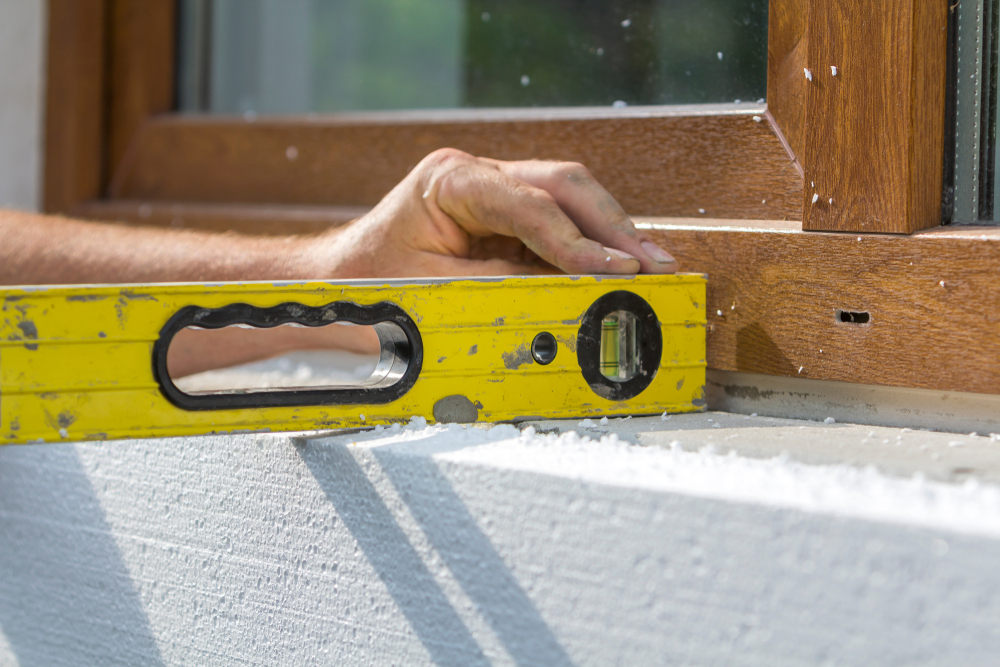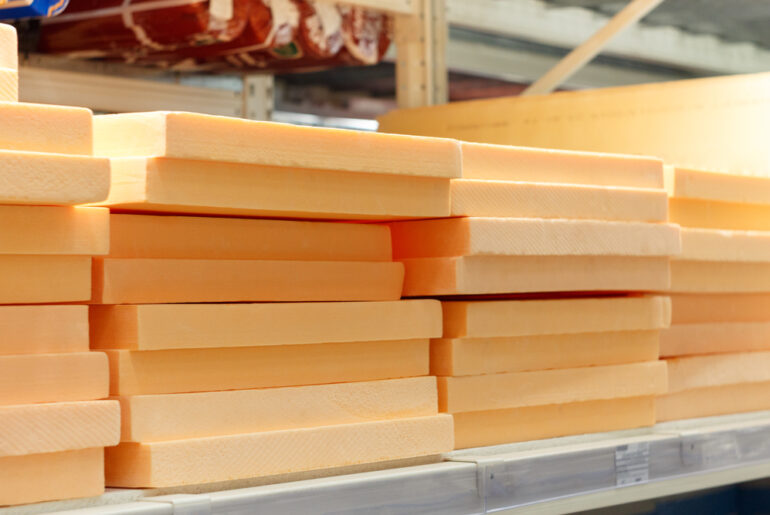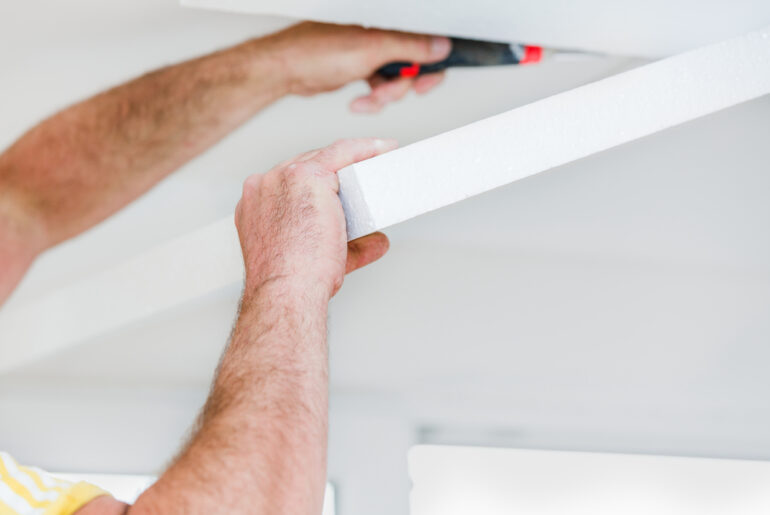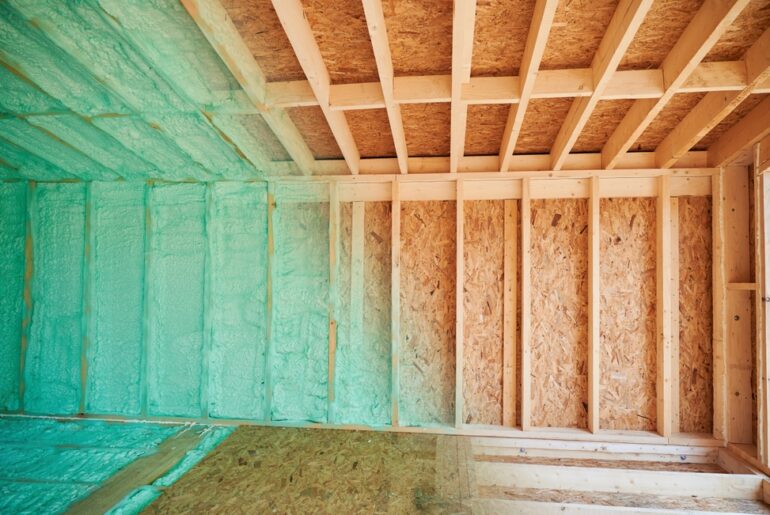There are three main types of rigid foam insulation board, and they each have their unique characteristics that make them ideal for many locations on a construction or renovation project.
The question is, which do you choose, expanded polystyrene, extruded polystyrene, or polyiso board? Which rigid foam insulation board material, or combination of boards, will deliver the energy savings and R-value you seek within the budget you have to meet?
Insulation is a key part of the drive to bring down energy costs, but what material should you be investing your time and money in on your build or renovation?
Check out our overview to help clarify the properties of XPS, EPS and Polyiso.
XPS Overview
Extruded Polystyrene is a closed cell rigid foam insulation board made by blowing polystyrene resin and chemical expanding agents into a mold. It has a high cell density, which gives it good compressive strength, which makes it harder to crush, or break, than other insulating boards.
Where is XPS commonly used?
It is extremely resistant to moisture, so it is often the first choice for below grade basement walls in a new construction, but it can also be used to insulate external walls above grade too.
Defining XPS characteristics/qualities:
- Extruded Polystyrene is generally easy to identify as if it is blue, green, or pink it is probably XPS/Styrofoam.
- It has an R-value of 5 per inch, which puts it right in the middle between EPS and Polyiso with regard to insulating performance.
- Lightweight and easy to work with, the panels often come with interlocking edges for better joining.
- Commonly used in walls and, due to its higher crush rating, it is generally recommended for below grade locations.
- Resistant to moisture and mold, but is slower to dry, so can retain moisture thereby lowering the R-value.
- If it takes longer to dry out it might mean mold and mildew has a better chance of taking hold.
- Most Styrofoam products are recyclable unless faced with a specialist covering.
- It can absorb moisture over the long term, which could diminish its R-value in time.
- The boards gradually off-gas their chemical gasses gradually over time, which does eventually degrade the R-value of XPS through the term thermal convection.
Cost $0.40 – $0.50/square foot.
R value 5/inch
EPS Overview
Expanded polystyrene is a lightweight foam board that is 2% polystyrene and 98% air, which makes for easy handling and, as it is made of a single substance, it is simple to recycle. It has also been around for almost fifty years, either as a foam board or a loose bead insulation for cavity wall insulation.
Where is EPS commonly used?
EPS is used everywhere in the construction industry to insulate walls, floors, ceilings and below foundation slabs due to its versatility and relatively low cost.
Defining EPS characteristics/qualities:
- Either white or gray, expanded polystyrene is easy to cut and straightforward to fit between rafters, wall studs or adhere to substrates.
- Expanded polystyrene has the best R-value for every dollar spent at R-4.6 per inch, which makes it a popular choice for those with a strict budget limit.
- It does not retain moisture as much as XPS, so it is ideal for below grade use, or anywhere with a high humidity rating as it dries rapidly in the right conditions.
- Expanded polystyrene can be treated to resist insects, faced to provide a vapor barrier or fire-retardant surface.
- It is very stable, which means that its R-value will not diminish over time.
- It is a versatile material that can be used in every area of a build or renovation project.
- Often recycled, or made from recycled material.
- High water resistance. In polystyrene insulation recovered from below a building in St Paul, MN, tests revealed water absorption up to a level of just 4.8% over 15 years.
Cost $0.25 – $0.35/square foot.
R value 4/inch
Polyiso Overview
Polyisocyanurate (PIR) insulation board was first developed in the 1960s as PUR, a polyurethane insulation board. The difference is that PIR is made with a higher level of isocyanate, which produces circular linkages at the molecular level, making the newer generation of polyiso boards much more robust.
Where is Polyiso commonly used?
Polyiso is a favorite material for use as part of an external thermal envelope for a building, from the roof to the walls, as it has a high R-value, double that of expanded polystyrene.
Defining Polyiso characteristics/qualities:
- Popular choice for commercial roofing applications or for insulating a house externally beneath wall sidings.
- With the highest standard R-value of the three most widely used insulation boards, at 6.8 per inch it is perfect for use where space is at a premium.
- Can be used in areas with exposure to high heat levels without melting and does not drip when exposed to flame. It is the most fire resistant of the three materials.
- As it is formed against a substrate all boards are faced, some with a radiant barrier that can also be used to provide a vapor barrier.
- It is the most expensive choice, and it is not easily recyclable.
- Off-gassing can lead to a reduction in R-value over time from 6.8 to as little as 5.5 over ten years (a 24% fall). This is a similar R-value to High Density EPS (5.2), which retains its R-value indefinitely.
Cost $0.40 – $0.60/square foot.
R value 6.8/inch
What are the alternatives?
Rockwool Comfortboard:
A mineral based woven insulation board; it is a non-structural insulation board used for continuous sheathing of the external envelope of a building. It is fire and mold resistant with rapid drying properties with a melting point in excess of 2000°F.
Cost $1.33/square foot.
R value 4.2/inch
SIPS Panels:
If your project is a new construction or an extension to an existing dwelling then you might want to consider using Structural Insulated Panels. These panels are designed to replace timber, or stick framing, and are constructed from two plywood or OSB sheets with closed cell foam between them. They are usually factory-made and shipped direct to site for assembly.
Cost $7.50 – $11.50/square foot.
R value 15-67/inch dependent upon specification, thickness etc
SPF, Spray Foam Insulation:
Closed cell SPF is an ideal solution to insulating difficult to access areas or spaces that require a solid vapor and air barrier. Closed cell SPF will stop up air leaks, will not rot or retain moisture, however, surfaces must be bone dry before application. Open cell SPF is better for dry attic situations although it has a much lower R-value than closed cell SPF.
Recommended read: Choosing Open Cell or Closed Cell Foam [With Checklist]
Cost $1–$2/square foot for closed cell SPF.
R-value 7/inch
Cost $0.35–$0.55 square foot for open cell SPF.
R-value 3.8/inch





